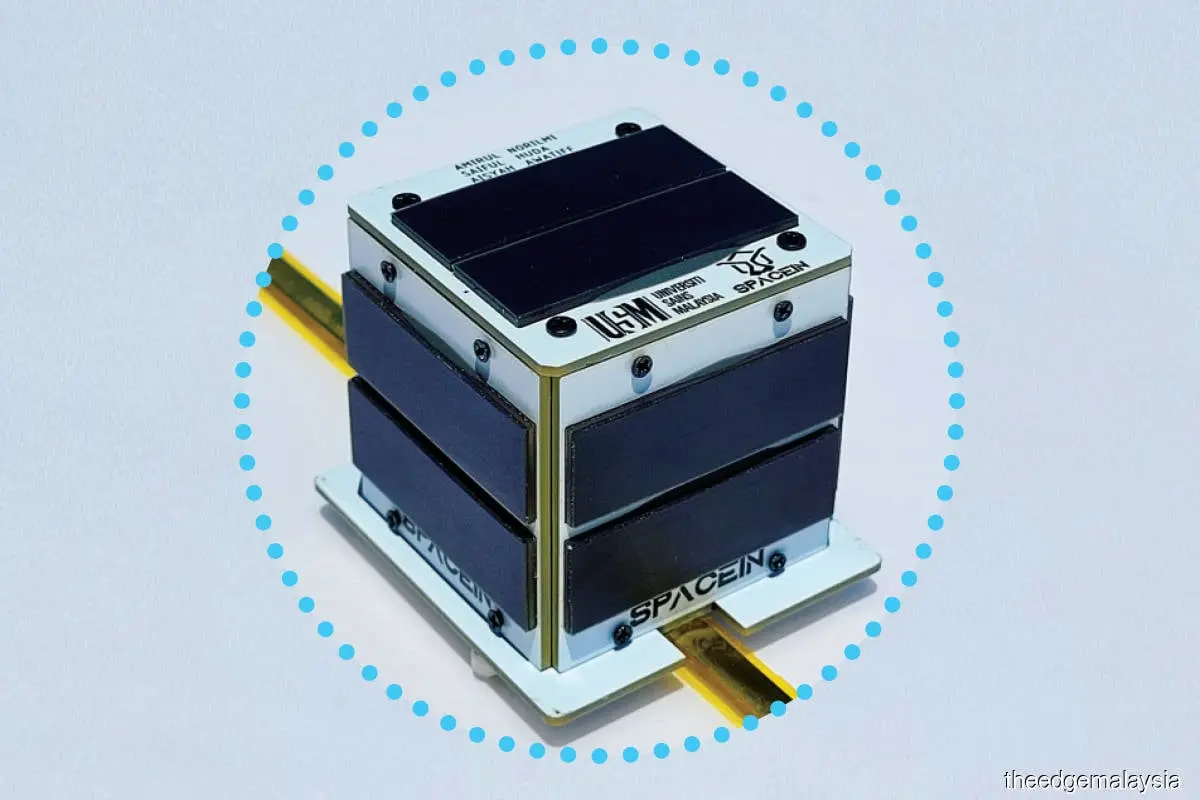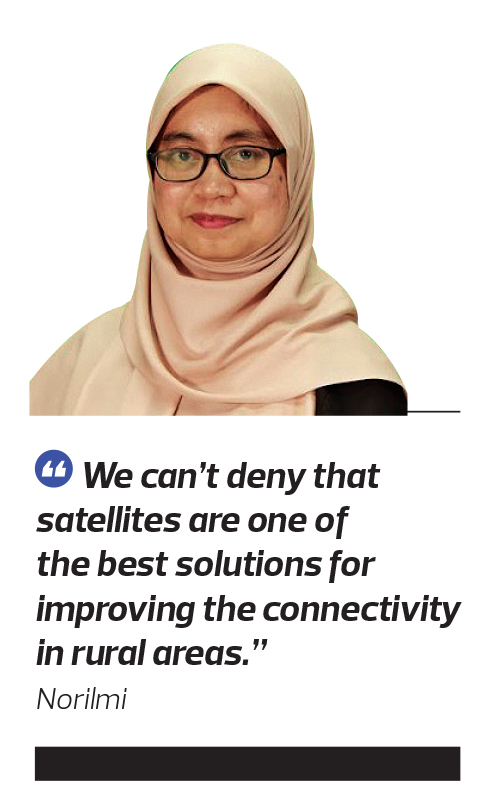ONLINE NEWS: SMALL STEPS FOR A BIG DIFFERENCE
The Edge Malaysia
Into Orbit: Small steps for a big difference
By Kiran Jacob | Monday, 12 Jun 2023

SpaceANT provides a low-cost solution for IoT applications
This article first appeared in Digital Edge, The Edge Malaysia Weekly on June 12, 2023 - June 18, 2023
The digital divide between rural and urban areas in Malaysia often means communities in the former would experience weak connectivity and unreliable internet access. Other than residents being unable to access the internet for basic activities, Internet of Things (IoT) companies would also experience problems when trying to upload data to their cloud solutions.
Addressing this gap is SpaceIn Sdn Bhd — a Universiti Sains Malaysia (USM) company set up in August 2020 — which has developed a picosatellite solution called SpaceANT. With a size of 5cm by 5cm by 5cm, SpaceANT, which costs a fraction of a traditional satellite, utilises advanced sensor technology to collect data. This enables IoT companies to access vital information from remote locations at a much lower cost compared to traditional satellite services.
SpaceIn initially started as an enterprise company owned by three postgraduate students in the USM Space System Lab. They had developed an educational satellite kit, CanSat Kit for Education, to teach students under 18 and the public the technological know-how on satellites.
 |
“Connectivity at remote areas is the pain point for [IoT companies]. They have the IoT devices, they want to adopt IoT but there is no connectivity,” says Dr Norilmi Amilia Ismail, founder and CEO of SpaceIn. For example, plantations in remote locations experience issues when trying to transmit the data collected from their IoT devices due to a lack of internet connection. Thus, a satellite is used to collect the data from the IoT sensors in those areas. The data is sent to a satellite, which transmits the information to the ground station, after which it is uploaded to the cloud. Users can retrieve the data from the cloud. When a satellite is launched, it will be in orbit. In June last year, the Measat-3d satellite was launched with the aim of reaching 100% connectivity, as outlined in the Jalinan Digital Negara (JENDELA) initiative to provide wider coverage and better quality broadband service. |
Accessing this satellite service can be expensive too, says Norilmi. “It can be affordable to big corporate companies, but how about the small plantations? Most of the satellite services are expensive because of the operational costs. When Measat launched its satellite, it cost nearly RM1 billion. How much would it need to charge its users [to make up for its investment]?
“We needed to address the issue, to reduce the launch and operational cost of a satellite so we can provide the benefit of a low-cost solution to users.”
When a satellite like the Measat-3d is placed in geosynchronous orbit, users would receive 24 hours of communication as the satellite orbits in sync with the Earth’s rotation. Smaller satellites such as picosatellites would complement the bigger satellites, says Norilmi.
Picosatellites are placed at a lower Earth orbit at 500km to 700km compared with traditional satellites, which are in geosynchronous orbit at 36,000km. “Because the distance is reduced, it means that you can have very small devices, which means you can reduce the cost. This helps IoT companies reduce the cost of operation and also reduces the cost to customers,” she explains.
Due to their smaller size, the development and launch of picosatellites can be completed within six months. They weigh less than 1kg each.
SpaceIn’s picosatellite, SpaceANT, uses pocket-cube technology and the components to build the satellite are widely available, reducing the time taken to build it.
“The satellite is always moving. When it’s moving, it can [survey] all areas of a plantation. Our tests have shown that we can get 10,000 data points in an hour. One satellite passes by an area around four times a day. One orbit is completed in 90 minutes,” says Norilmi.
SpaceANT costs around RM5,000 and will be launched in October this year. SpaceIn is working with a company that uses IoT devices for durian plantations as well as the Malaysian Palm Oil Board, which is looking at the utilisation of IoT to alleviate labour shortage issues in agriculture.
“They’re really interested in using this technology so they can adopt IoT devices. By utilising IoT devices, they can gather data easily without needing workers to scout entire plantations,” she continues.
SpaceIn has also been approached by a company working on forest conservation. “It’s quite interesting working with them because they want to tag all the trees, and they need something to monitor them. IoT devices can provide these data to them. The problem of course is connectivity, and the satellites can help in this aspect.”
Apart from picosatellites, SpaceIn also provides high-altitude balloon launch services. The balloons are used for space photography and the testing of communication devices. “We are the only service provider for high-altitude balloons in Malaysia,” says Norilmi.
The balloons, which are flown up to 22km above sea level, are equipped with functional communication and tracking technology.
Norilmi believes that satellites are the answer to bridging the digital divide. “We can’t deny that satellites are one of the best solutions for improving the connectivity in rural areas. If you reduce the cost of using satellites, it means that more people can use them and this will eventually close the gap between urban and rural areas.”
Come October, SpaceIn satellites will be launched from the SpaceX launcher in Florida. Moving forward, Norilmi hopes to see a launcher closer to home, which will reduce the cost considerably.
“We want to reach the equatorial orbit but it’s quite hard for a launcher to do so. We hope that [one day] there will be a launcher [in this part of the world] in Malaysia, the Philippines or Indonesia,” she says.
- Created on .
- Hits: 230
